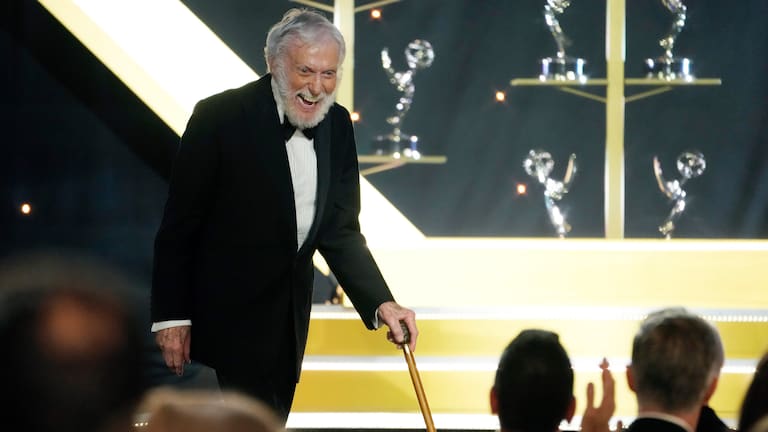"This is where all my ancestors used to live."
It's called Pakake o Whirikoka, an ancient pā on Matawhero Lloyd's ancestral land that was, for decades, just a paddock.
"It used to be a holding pen for the cows," said Lloyd.
Now, it's a piece of living history embedded in the hills of Whatatutu, a tiny settlement behind Gisborne.
An air of tranquillity washes over you as you enter through the flax and mānuka-post fences. The site is dotted with traditional whare and native trees overlooking the Waipaoa River.

Smoke spirals across the valley from the cooking fires, and you can see and feel it — this is the life Ngāi Tamatea once had here.
"It's a labour of love for us as a family and for our iwi to restore a historical place of significance," said Lloyd.
And although its story is hundreds of years old, its modern recreation started around seven years ago.
Rebuilding the past
There were no blueprints of what was once on the site. Instead, Lloyd looked to the earth to guide him.
"Once we'd cleared out all of the weeds ... you get back to the dimensions that are existing in the ground."
The huts, cooking pits and their history still lived in the soil. It was as though the land spoke to Lloyd.
But to rebuild the past, he needed modern technology.
"With my extensive background in IT, I had to Google how to do everything. I experimented and gave it a shot."
Lloyd used the odd chainsaw and cable tie during construction, but most of the work used people-power over power tools.

"Manpower and daughter power and son power and friend power, and anyone who comes and visits," explained Lloyd.
He laughed when describing his children's attitude towards getting involved in the first stages. Eventually, they came around, and the slow build brought them together.
"When you're doing things slowly, taking your time and being patient, you're a little bit more in tune and, I think, in harmony with the natural rhythms."
His greatest tool was the stories of older community members, who remembered how things were once done.
"We try to do it as much as we can the way they used to, but we don't live in those days. Some of the resources and some of the materials and tools they had, we don't have."
Resources
It's easy to feel encompassed in the past, but glancing across the valley will remind you how much has changed.
The banks above the Waipaoa River were once covered in native giants, which gave Lloyd's ancestors all the resources they would ever need.
Now, the area has been cleared for farmland and pine forests.
As bunches of tī kōuka (cabbage tree) leaves are placed across the roof of his latest hut, Lloyd acknowledges how different things once were.
"Traditionally, they used raupō (swamp grasses). Unfortunately, all the swamps have been drained for agricultural and farming purposes, so we don't have any raupō that we can use.
"We'd have to create a whole new series of swamps to do that."

Lloyd soon realised how connected the pā was to the native bush.
"We've begun that journey of replanting natives and telling the stories of each of those natives. To replenish it, creating new resources and materials is a part of the whole aspiration of the place."
Because without suitable trees and plants, the project was destined to be a short-term endeavour.
Clearing the land
If you'd visited Pakake o Whirikoka two years ago, you would have been greeted by a far more established site.
Sleeping houses dotted the hills with mānuka brush roofs, and the pātaka kai (storehouse or pantry) sat over established garden beds.
But Cyclone Gabrielle laid waste to it all — and that's precisely how Lloyd wants it to be.
"One of the rules I put on myself was no unnatural preservatives for any of the material, which means the wood's going to rot.
"You've got about a five-year cycle before they have to be replaced. Coming up to Cyclone Gabrielle, we were at about the five-year mark. So I knew that it would get hammered," he explained.
"This is the next step in building the next layer, and then we'll build another layer.
"But if it's finished, then I'm finished, and I don't want to be finished."
Finding history
When you listen to Lloyd speak, there's an air of gravitas about him. He has tales, one of a chief's pet seal and another of a mystical taniwha who would guide the lost home.
He is so connected to his culture that it's hard to believe he was once oblivious to it all.
The self-confessed "army brat" was shipped around the country with Whatatutu far from his mind. But on a rare visit home, he was confronted by those who hold the real power in the town.

"The nannies grabbed my ear and said, 'Why don't you come home more? Why don't you come and learn more?'"
He didn't think much of it until his daughter told him about a dream she had, one in which "women with tattoos on their faces" came to take her home.
And so he moved back.
"That began my journey into rediscovering who I was. My history."
For everyone
There is no ticket booth at Pakake o Whirikoka, no website to book a visit, and no kapa haka — although the guitar is always nearby for a waiata.
"Because my ancestors all had guitars," joked Lloyd.
The pā site is for everyone. Lloyd has hosted musicians, international Indigenous groups, schools and film crews.
"It was never created with a tourism principle in mind. It was created with a family history point of view," he explained.
"So the pā site is a way of saying come and join in and share what this means to me and what this means to history."
A good fire
Every night at the pā ends with a fire — the ancestral Netflix, Lloyd calls it — a place to gather and be lost in its energy.
"This is where the social part of history and tradition has always been generated around a good fire."
In a pit ringed by punga with a well-placed gap towards the setting sun, Lloyd asks only one thing of the people who come here: To share.

"Everyone has a good story. No matter who you are. You have to generate the right environment to let [people] start talking."
In the moments between the silence, Lloyd talks about his dream for the pā's future — a dream that he knows will outlast him.
"An old man can lie back on the hill with a bit of grass in his mouth and watch the sunset over the river.
"Watch the kids and the grandkids playing, and then they'll carry on the same story, and the tradition can continue."
Preservation
Throughout this country, thousands of pā once bustled with life — sites that have now been lost and forgotten, and only the slight contours of the land tell their story.
"I want to establish a pā site restoration trust and recognise and acknowledge them," Lloyd said.
Bringing life back to the places that were important to the people who came before us. Tying together the past, the present, and the future.
Because, as Lloyd puts it, if an IT guy can do it, anyone can.


















SHARE ME